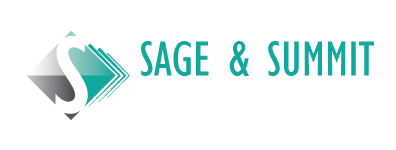Recently a sage and experienced extended family member reminded me of the importance of keeping an outward focus. In short, they said when your focus is inwards, you are just waiting for your demise. When you are focused outwards, you are learning, living, and adding value.
The same is true for organizations. Without an outward focus, an organization, no matter how strong it is today, will eventually be eclipsed by a competitor that better understands the market and how the world impacts that market.
What needs to be in place for an outward focus:
If your house is not order, things can get difficult very quickly. We advocate for organizations to have open communication and broad empowerment. Empowerment allows everyone in the organization to be aware of and act on information they receive from outside the organization. Front line workers pay attention to clients and support them in the moment, procurement teams listen to suppliers for shifts in the market, and the same applies to sales, accounts receivable and every other position.
Open communication means that outside changes seen by employees, flow through the organization so that broader trends can be anticipated and acted on. Implementing the right technology can make a huge difference in how effectively information can be shared, consolidated, and interpreted – no matter how small your organization keeping up with technology is an imperative.
No organization will ever be perfect at empowerment and open communication, so don’t wait for internal perfection before you push for an outward focus. It is never too early to discuss what your team is learning from their external connections, or to employ tools like Michael Porter’s Five Forces, or Aguilar’s PESTEL Model to help understand the impact of external forces on your organization.
How can you tell an outward focus is in place:
Relationships can tell the story of an outward focus. First off you will have improved customer relationships and loyalty. By actively listening to customer feedback and aligning products or services accordingly, organizations will build stronger, more enduring connections with their client base. This customer-centric approach not only enhances satisfaction but also positions the company as responsive and attentive in a competitive market.
Furthermore, an outward focus fosters strategic partnerships and alliances. Professor Rosabeth Moss Kanter, in her HBR article Collaborative Advantage: The Art of Alliances argues that organizations should look beyond their boundaries to identify opportunities for collaboration. By forming strategic partnerships with other businesses or industry players, organizations can leverage each other’s strengths, share resources, and collectively address challenges. This collaborative approach often leads to mutually beneficial outcomes and a more robust market presence.
Benefits of an external focus:
One key advantage of maintaining an outward focus is enhanced innovation. The variety of information and insights gathered from external sources can spark creativity with partners, or within an organization. By actively seeking input from customers, industry experts, and even competitors, companies can tap into a diverse range of perspectives that fuel innovation. This collaborative mindset not only fosters the development of groundbreaking products and services but also strengthens the organization’s adaptability in the face of rapidly changing market trends.
The main advantage of a strong external focus is sustainable growth which creates opportunities for all stakeholders. There are always significant ups and downs in every organization’s journey, but you will know you are in the groove when you are constantly choosing between exciting opportunities.

